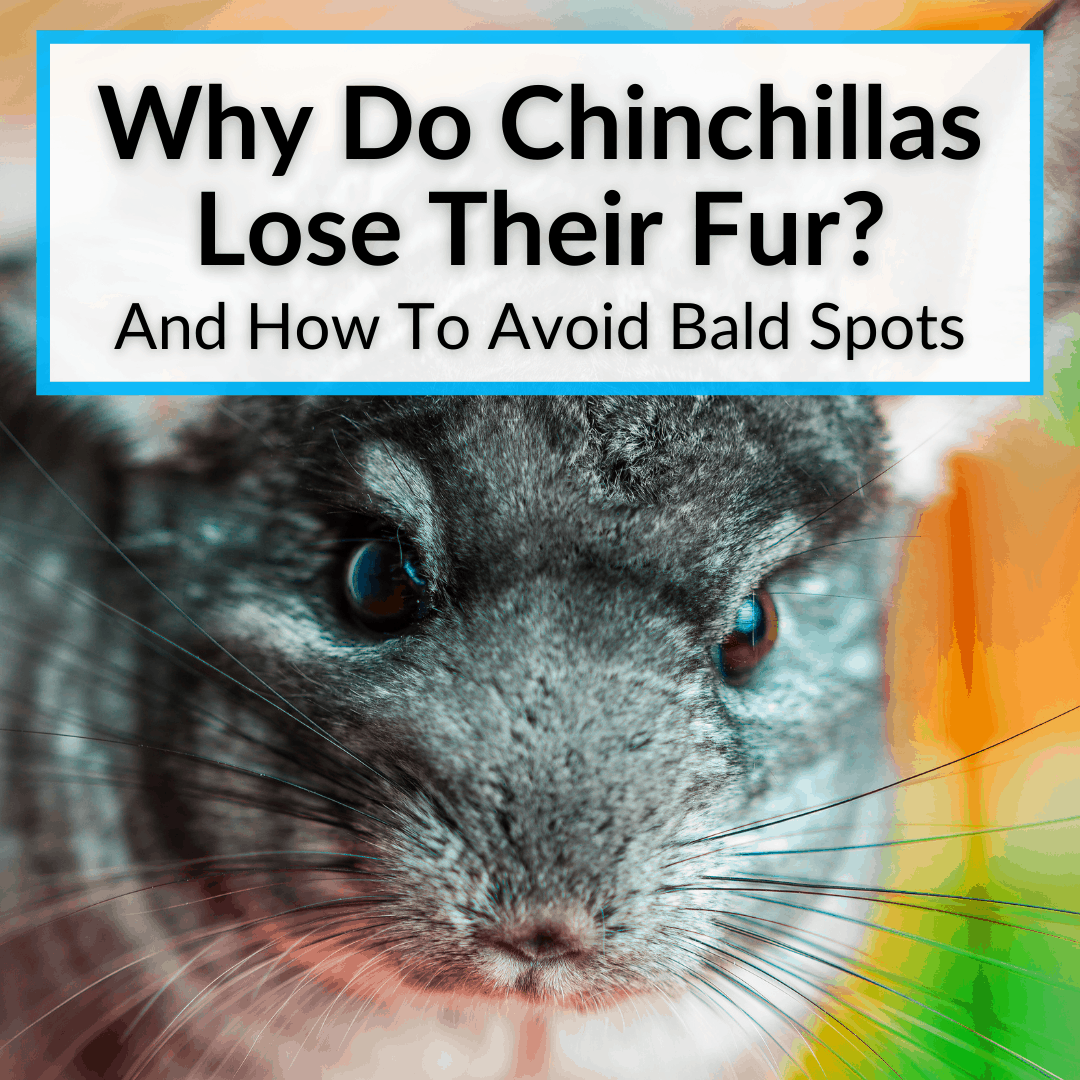
The first time this happens can be quite shocking. At the very least worrying.
But rest assured, a chinchilla losing fur is not a huge deal. It grows back.
But it can indicate a problem.
It is important to know why chinchillas might lose their fur, so that you can diagnose the issue and take steps to fix it.
Keep reading to learn the causes of a fur slip, plus everything else you need to know about this topic.
Contents
Why Do Chinchillas Lose Their Fur?
Most commonly, chinchillas lose their fur due to stress, anxiety, or being held incorrectly. This causes what is known as a fur-slip.
Chinchillas can also chew their own fur. Dietary imbalances and hormones can also cause fur loss.
That’s the short answer. Further explanation is needed for you to be well prepared to raise your new chinchilla without having issues with hair loss, fur slips, or bald spots.
We’ll cover it all below.
😕Adopting and caring for a new chinchilla can be intimidating and confusing. But it does not have to be.
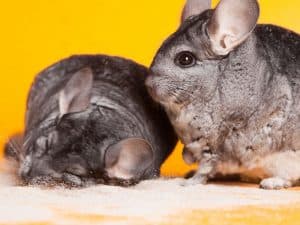
Be sure to check out my full digital eBook “Avoiding Critical Mistakes: Ultimate Chinchilla Care eBook” to get the best advice, tips, and tricks and supply recommendations to make adopting and caring for a chinchilla much more comfortable and easier to understand.
You can learn more about this eBook offer using the link directly below.
Learn more here:👉 Avoiding Critical Mistakes: Ultimate Chinchilla Care eBook Offer
Causes Of Chinchilla Hair Loss
We now know that a chinchilla can lose fur for a variety of reasons but some causes are more common than others.
One of the most common reasons, and something you will likely learn a lot about during your chinchilla parenting time, is what is known as a fur slip.
This is a defense mechanism for a chinchilla and primarily used to escape predators.
Something to keep in mind about chinchillas is how heavily preyed on they are in the wild, in their natural habitat.
And they are not just victimized by other animals. Humans also hunt them for their luxurious fur.
The fur slip is a method they use in the wild to escape predators, but they will just as easily use this methods in captivity as well.
Think of a skunk.
When a skunk is under the impression it’s being stalked or hunted or feels an enemy or predator get too close, it releases it’s nasty, musky, oily liquid creating a terrible odor.
Well, a chinchilla doesn’t have this ability (thankfully).
However, under stress, fear, or in an attempt to escape, a chinchilla can easily release a patch of fur which helps them escape their predator. This is an adaptation in chinchillas that helps them survive.
In captivity, this is most common if you mishandle a chinchilla or corner it before it has built a bond, and trust, with you as the owner.
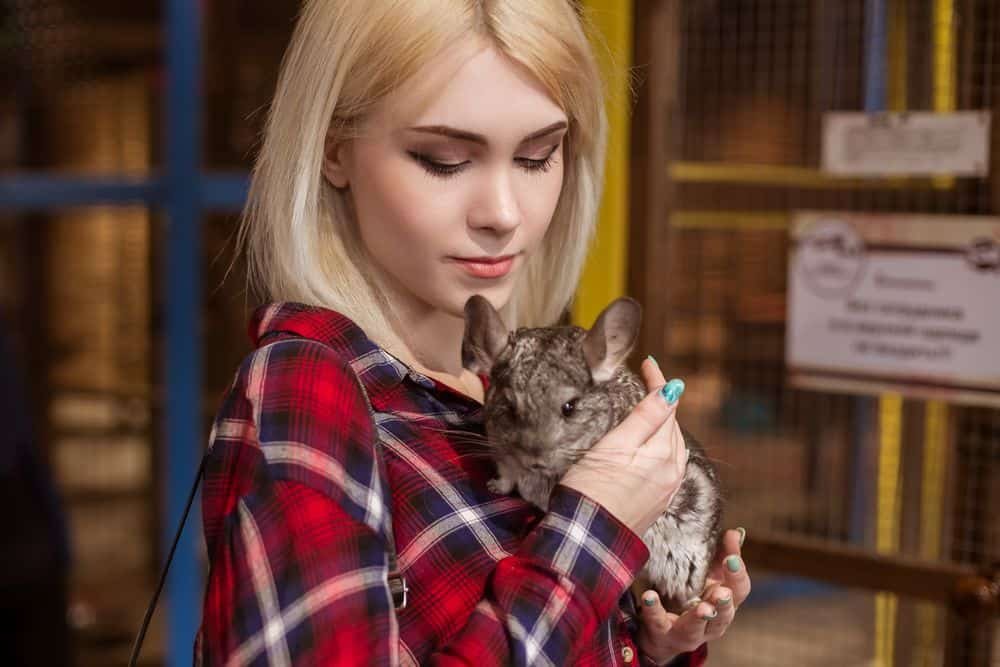
Chinchillas are accustomed to being captured by being picked up from the backside. When this happens, the chinchilla can release its fur (a fur slip), causing the attacker to lose its grip, allowing the chinchilla to escape and run to safety.
If this happens to your pet when you try to pick it up, it will cause a temporary bald spot. But don’t worry, it will grow back.
Other common causes of hair loss or bald spots with chinchillas can include the following:
- Dietary imbalances
- Hormone imbalances
- Boredom causing fur chewing
- Lack of grooming and hygiene control (dust baths)
- Fighting with sibling chinchillas
- Ringworm
- Other infection or illness
- Improper handling (more on this shortly)
You can see that plenty of other factors could cause hair loss, apart from a fur-slip. Let’s take a closer look at some of the most common reasons for hair loss next.
Fur Slips Due To Improper Handling
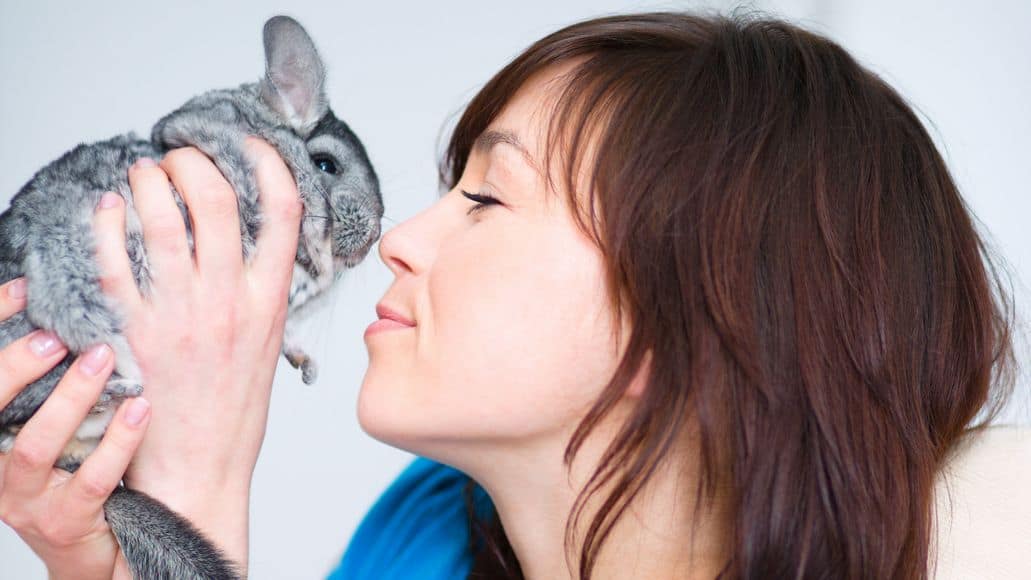
As mentioned, a common reason a chinchilla will experience a fur slip or hair loss is strictly due to chinchilla parent error.
Handling your chinchilla correctly is imperative to ensure this doesn’t happen. You want to grab your chinchilla at the base of the tail or lower back.
Basically, you will be palming your chinchillas tushy to handle him or her correctly. This ensures a safe and comfortable grip and avoids scaring your pet so it doesn’t suffer hair loss, shedding, or a fur slip.
This is also going to help your chinchilla to be much more comfortable with you overall. I highly recommend reading my post about how to get your chinchilla to enjoy being held to become a pro in no time.
It is also important to learn how to get your chinchilla in and out of the cage correctly to avoid scaring it, potentially resulting in hair loss or bald spots.
Long story short, improper handling, and improper grabbing at your chinchilla is a top reason for fur loss or bald spots on chinchillas.
Especially for new chinchilla owners. If you attempt to hold your chinchilla in a different manner, you may encounter an issue.
Don’t grab your chinchilla around the body or from underneath, unless you know how to do it correctly.
Doing this can not only startle your chinchilla, but when it gets scared and tries to wiggle free, it may experience the fur slip or hair loss issue.
Do not worry, it will get much easier with practice and time.
Stress And Travel Can Cause Fur Loss
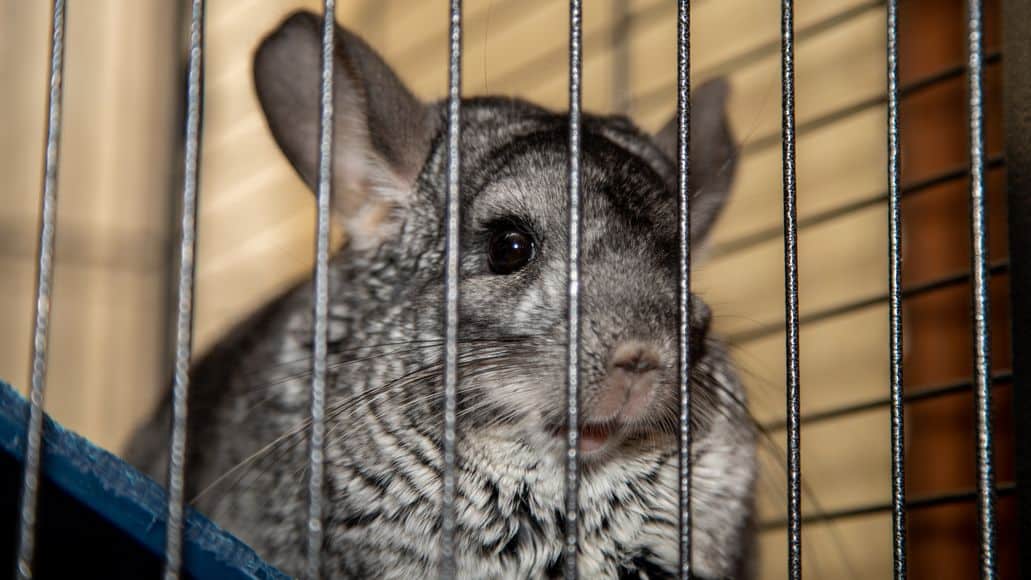
Stress is another common cause for hair loss and fur slips with chinchillas.
Since we already discussed how handling can cause issues with stress and fear, I want to also cover how travel can cause anxiety for your chinchilla, resulting in the same fur loss.
Traveling with a chinchilla is stressful on your pet. To reduce the stress and fear your pet feels, try to keep travel time as short as possible.
It is also imperative to keep your chinchilla at proper temperatures while traveling, to avoid fur loss issues or other stress-related health problems.
Fur loss would be the least of your concerns when you begin adding in other problems that can occur with stress and travel such as heat stroke.
Put simply, if your chinchilla experiences heavy anxiety, stress, or fear when taking a trip to the vet or during other travel, it’s very possible a fur slip could be the result of the trip.
Unfortunately, we still need to go to the vet at times for other health-related concerns and if that causes a bald spot from time to time, you just have to deal with it.
It will grow back and is nothing to get overly worked up over.
Stress During Playtime

Playtime is another situation where a fur slip can occur. It comes down to the same issue though: trust.
Remember, if your chinchilla trusts you and recognizes you as the loving owner, you can have a lot more control of a situation.
Do not corner your chinchilla during playtime or otherwise scare it. Make it fun and interactive.
And when playtime is over, get your pet back into the cage on its terms. If you need to, entice it with treats or its dust bath, at least in the beginning.
Eventually, getting them in and out of the cage will become very easy. But in the beginning, they have adapted to their environment or come to fully trust you, they may be reluctant to go back to the cage.
Do not try anything crazy to get them in the cage, such as grabbing at them, chasing them, or any other tactics.
Take it slow and remain cool and relaxed. Otherwise, a fur slip, stress, bald spots, and other issues are likely to occur.
Not to mention, it can be damaging to the relationship for your chinchilla to fear you or gain an association that you are trying to trap it or capture it, every time you interact with it.
What helped me greatly to build the trust and return my chinchilla to the cage easily was using a playpen to interact with her.
This allowed us to interact closely in a small space which built the trust faster. It also eliminated the need to struggle to get her back in the cage. You can read my post about using the playpen technique here.
I highly recommend the Jespet Playpen (you’ll find more info in that post on playpens I just linked to).
I have been using it for 5 years and it still works great. It has plenty of space for your chinchilla to interact with you freely, allowing it to climb and be itself.
I cannot recommend this playpen and the playpen technique enough, but ultimately that is up to you.
In summary, learn to get your chinchilla in and out of the cage and do not rough house, corner, or chase it during playtime to avoid hair loss, fur slips, and bald spots to the best of your ability.
Ringworm And Dermatophytosis
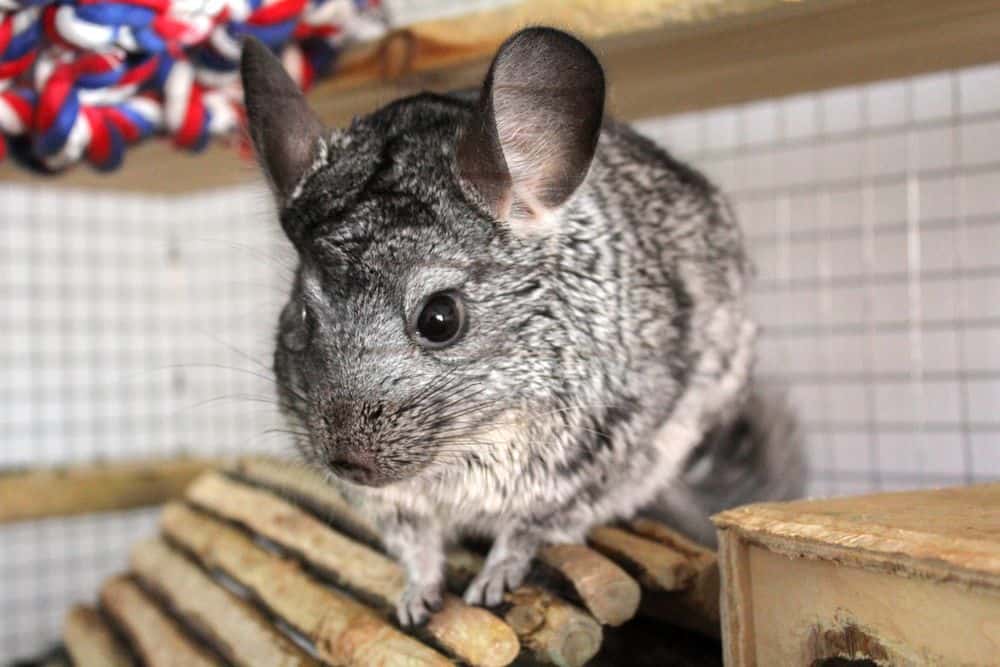
Ringworm and dermatophytosis are less likely to be the cause of a bald spot or fur loss on your chinchilla, but they are a possibility and worth mentioning.
It’s possible that ringworm can occur on your chinchilla which may result in hair loss or bald spots if left untreated. It can be itchy and leave you wondering: why is my chinchilla scratching? All that scratching can lead to fur loss.
Ringworm is a fungus and can be transmitted to your chinchilla either through people or other pets. If your chinchilla has dry skin or fur or lives in a dry environment, ringworm can survive several years on your pet and cause hair loss.
This is why I make sure to always keep my chinchilla’s room and living area at ideal temperatures. I also run 3 de-humidifiers to ensure the air quality is as good as I can get it.
Fleas
The last cause of concern which is also extremely rare could be fleas. If your chinchilla is around other pets such as dogs that may have fleas, it is possible that these travel onto your chinchilla.
Again, this is very rare and not likely but it’s worth double-checking.
It’s actually one of the few times I recommend brushing your chinchilla to help get a better look into the fur and to search for flea dust or grime.
If you believe this may be the scenario, you need to consider making an appointment with your vet to double-check. Better safe than sorry in these situations.
Boredom
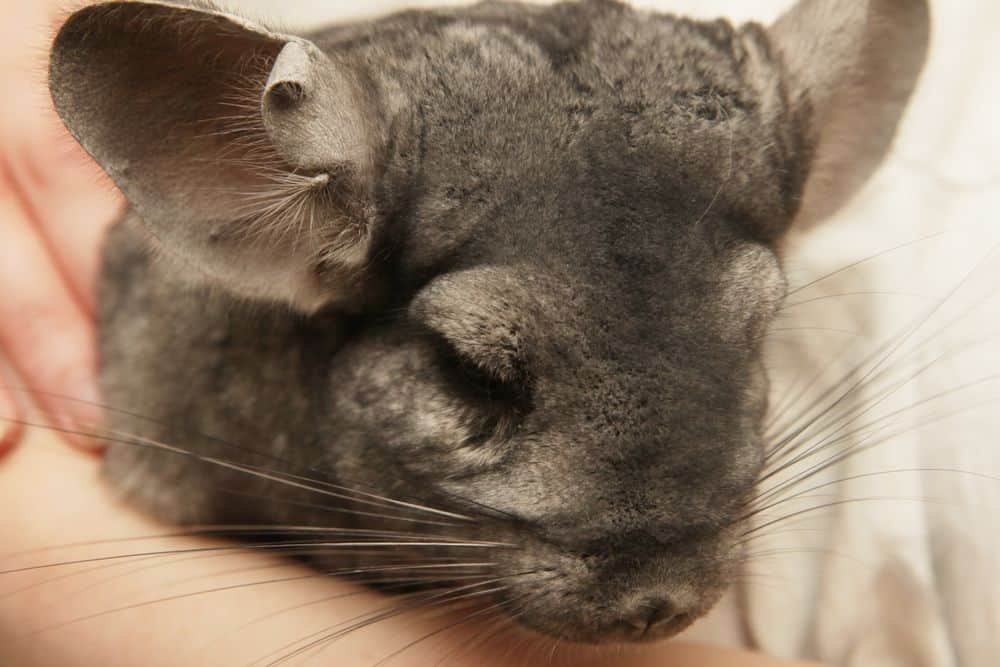
One possibility we have not covered is your chinchilla destroying their own beautiful fur coats causing fur loss and bald spots.
Under stress, anxiety, or fearful conditions your chinchilla may chew and pull at its own hair, as we have already discussed.
However, boredom could also cause the same result. When this happens it’s most likely to happen right along the back toward the butt.
Although a chinchilla can technically bite or chew off their fur anywhere on the body, this location is the most common that you will see in most circumstances.
The best way to avoid bald spots and fur loss due to boredom is to ensure you do a few things. First, ensure you are spending plenty of time with your chinchilla.
This ultimately keeps them happy. They are social pets and need this interaction.
Secondly, realize that you only spend a limited amount of time with them per day so ensure you provide one of the best chinchilla cages for them.
Not only a great cage but load it with plenty of great chinchilla accessories and toys. View my post about the best chinchilla accessories here. And see my post about the best chinchilla toys here.
This will help make sure that boredom never becomes the cause of fur loss or bald spots with your chinchilla.
Your vet can help diagnose if the hair loss is due to chewing or another cause.
In most circumstances, reducing the stress factors or adjusting the environment to become more chinchilla friendly should do wonders toward solving the problem for you.
Other Important Info On Chinchilla Fur Loss
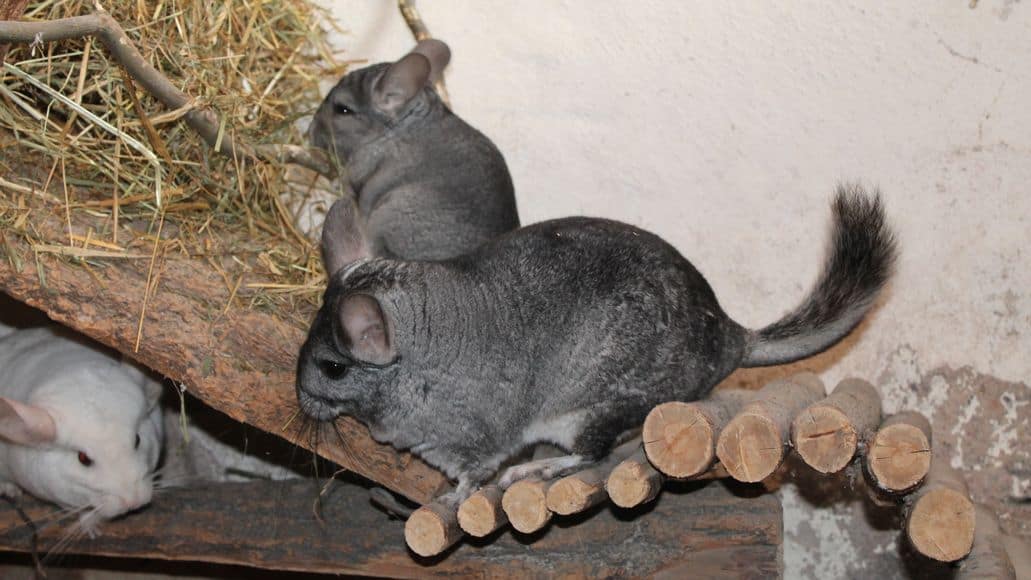
Dust Baths For Healthy Fur
Chinchillas need to wash and maintain proper hygiene, just like you and I do. Well not quite like you or I.
To keep your chinchilla fur healthy, silky, and smooth, you don’t actually wash it with water at all. Instead, you need to afford your chinchilla multiple dust baths per week.
Dust baths are the way to keep everything from the fur to the skin healthy and functioning properly for your chinchilla.
It is also just part of learning how to take care of a chinchilla properly and needs to be on your to-do list each week.
A regular dust bath can do much more than give your chinchilla 10 minutes of rolling around and having a wild time.
The dust bath also helps your chinchilla remain fungus free, infection free and it allows moisture to get back into the fur and skin.
In addition, regular dust baths can help prevent bacterial infections or other health issues (more on this shortly).
Overall, this is going to greatly reduce the chance of bald spots, fur slips, or any other form of hair loss with your chinchilla.
Limit the dust baths to 3 a week maximum and you won’t have anything to worry about. This will ensure you do not overdo it and dry out your chinchilla’s fur.
Also, be sure that you are always remaining diligent about cleaning your chinchilla’s cage on a regular basis.
You can read my about the best chinchilla dust and dust bathhouses.
You can also read my post about how to give your chinchilla a dust bath properly.
Some Shedding Is Normal
Another consideration to keep in mind on the subject of hair loss, bald spots, and fur slips with your chinchilla is shedding.
Normal shedding will occur and it does not mean anything is wrong. Shedding will never cause bald spots or fur loss in a manner you will notice.
A chinchilla sheds minimally, so it will not cause a noticeable bald spot. If you do notice one, it’s not normal shedding and more likely to be a fur slip.
Does Chinchilla Hair Grow Back?
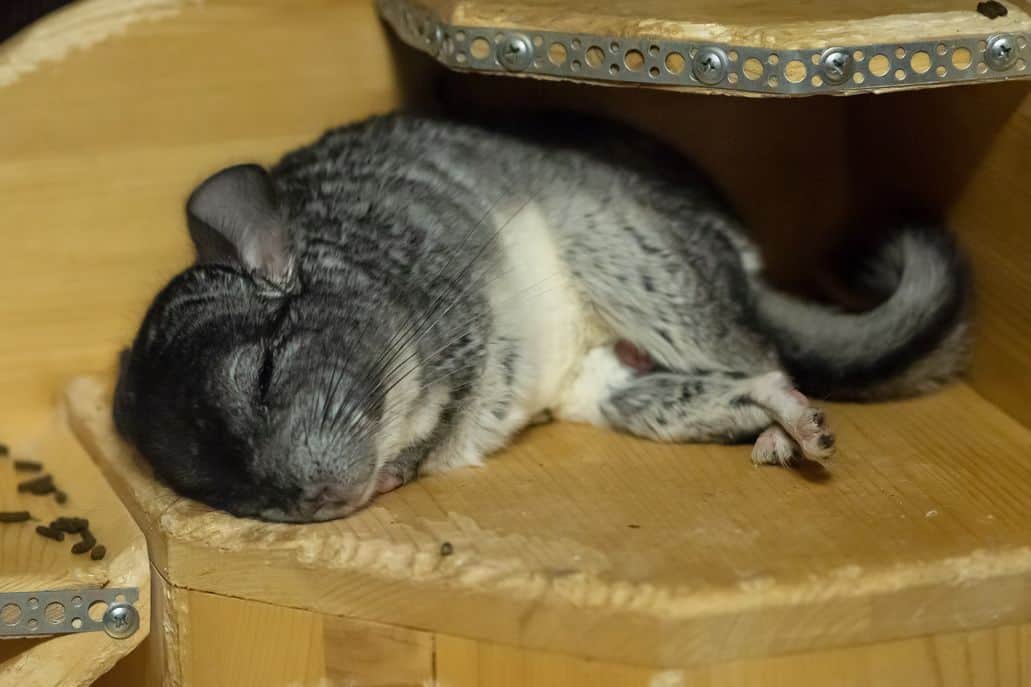
The hair on your chinchilla will begin growing back immediately, but obviously, full growth doesn’t happen overnight.
After a few weeks or even months, you shouldn’t notice the bald spot anymore and your chinchilla should look the same as before.
That’s assuming you don’t mishandle it and cause a brand-new fur slip in the meantime.
So, if you do notice a bald spot, simply wait for the fur to grow back and you will be in great shape. The same goes if you need to shave your chinchilla for something like surgery or to fix matted chinchilla fur.
What To Do If My Chinchilla Has A Fur Slip
You should not (and can not) do anything. Just make sure you don’t repeat the situation that caused the fur slip. It is simply a natural defense mechanism. How do chinchillas defend themselves apart from fur slips? That article covers all the methods at their disposal.
The only time you should contact a vet or be concerned about the hair loss on your chinchilla is if you have no idea what caused it. Or if your chinchilla is displaying other odd behaviors that could indicate an illness that’s more serious.
Most of the time, your chinchilla was either handled incorrectly or you stressed your pet out is some other way. Correcting the handling or refraining from repeating the stressful behavior should have everything back to normal in no time.
Chinchilla Losing Hair Around Eyes
The technical term for a chinchilla losing hair around the eyes is “periocular alopecia.” Thanks to Will Smith, everyone is now familiar with the term “alopecia.” And “periocular” simply means “around the eye.”
The most common cause of hair loss around the eye is a fungus called Trichophyton. This is the same type of fungus responsible for ringworm in chinchillas. As mentioned above, it usually results in hair loss and possibly lesions.
If you notice hair loss around your chinchilla’s eyes, contact your vet immediately. Follow my instructions above for ringworms to learn what you can do to prevent something like this before it ever happens.
Chinchilla Losing Hair Around Nose
This is basically the same as losing hair around the eyes. If your chinchilla is losing hair around the nose, follow the instructions given above for this same situation wit the eyes.
Chinchilla air Loss: Final Thoughts
Hopefully, the potential causes of fur loss, hair loss and bald spots with your chinchilla are now clear and you know what you need to do on your end to ensure they do not happen or happen rarely.
If hair loss, a fur slip, or a bald spot has already taken place, do not worry.
Your chinchilla’s fur will grow back and most likely the cause of the fur loss, fur slip or bald spot is nothing to fret and will correct itself with nothing more than time and practice.
Handle your pet with care and keep an eye on your chinchilla’s behavior and it will remain beautiful, silky, and smooth and will not lose any fur as a result of your errors.
If you believe there is more cause for concern, be sure to contact your vet to double-check and to play it safe.
Chinchillas make for excellent family pets and deserve the best care we can provide.
Chili and I wish you the best of luck with your new chinchilla and hope you do not have any issues with fur slips moving forward.
Share your thoughts about your chinchilla losing fur.
Do you have any related stories about a fur slip happening with your chinchilla or dealing with bald spots?
What was the cause and what did you do to remedy the situation?
How long did it take for the chinchilla to grow that beautiful fur back?
Be sure to share those thoughts, stories, and concerns by dropping a comment below.
As always, Chili and I appreciate you stopping by and reading today and we will see you again next time.
Leave a Reply